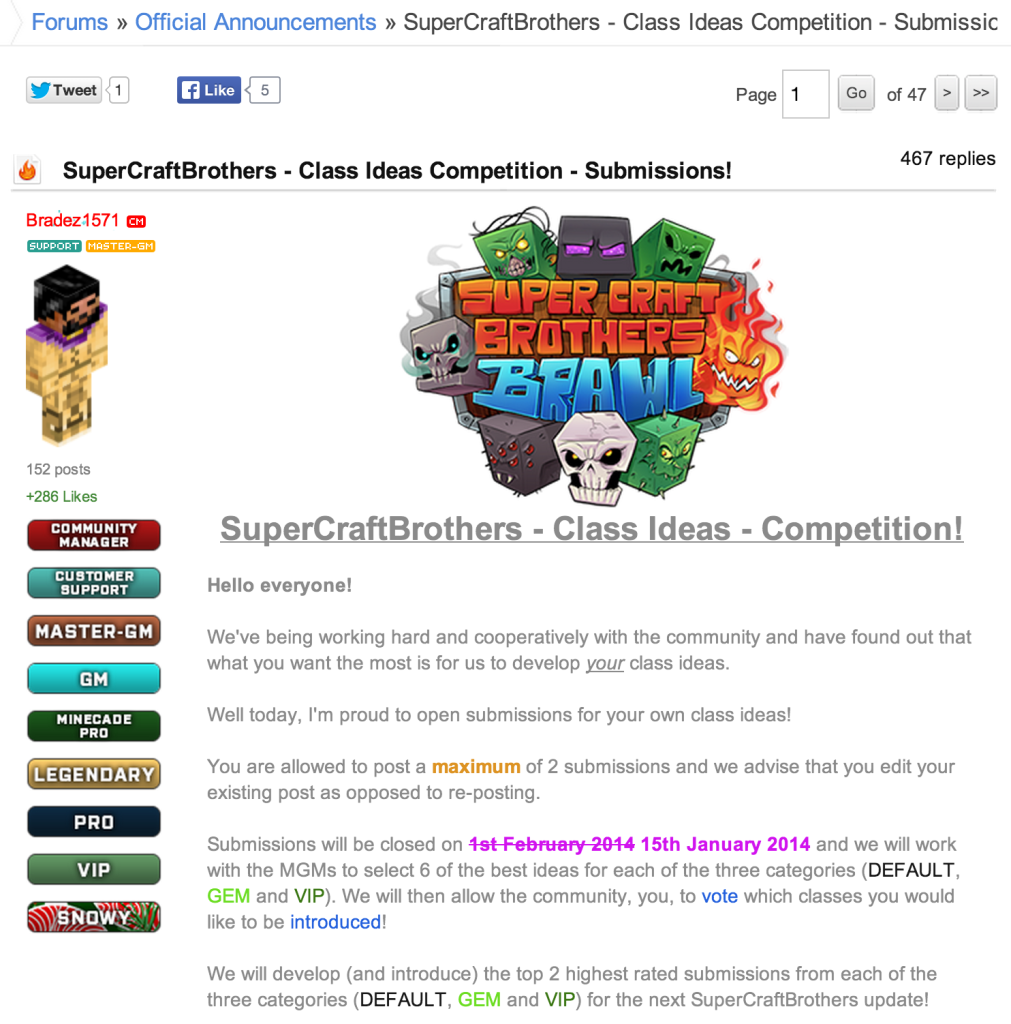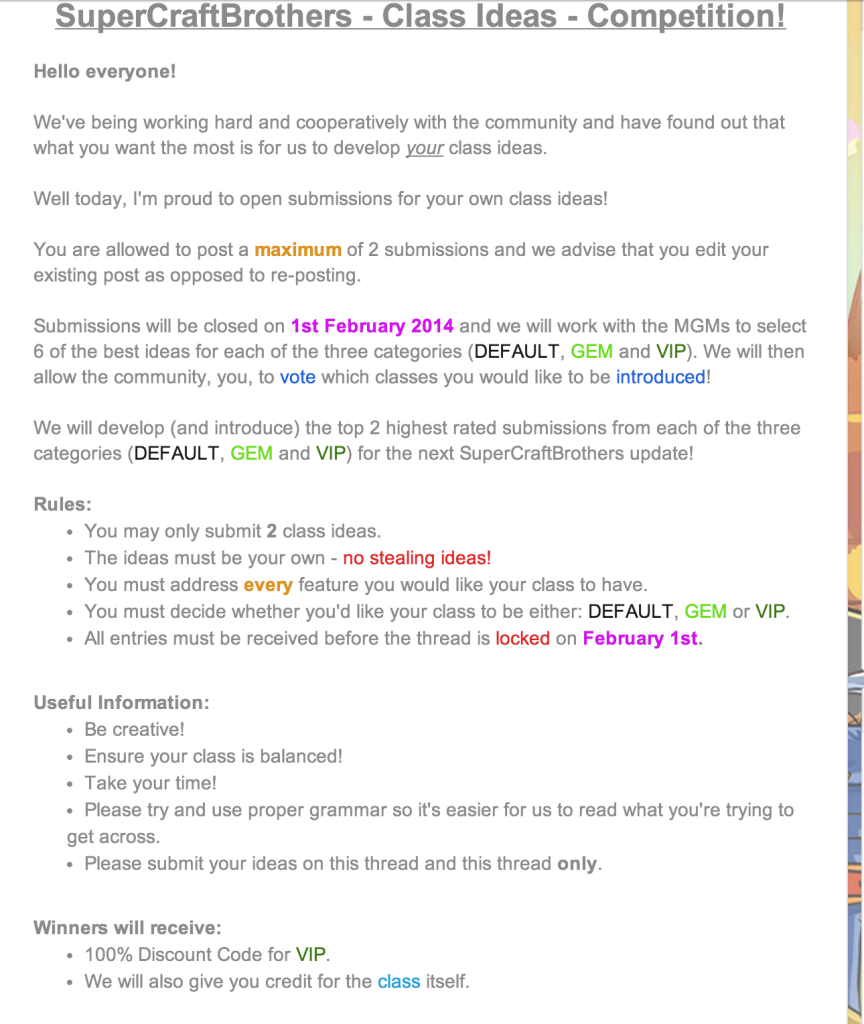Last week during the snow days, or rather the Freeze days of -30+ degree weather, my son spent those two days writing and revising a proposal, sharing its content with his peers, and analyzing work by others for critical logic flaws and idea development. The weekend prior he spent researching several ideas, and then pitched them to me as a sounding board for him to decide on what direction he would go. The many hours that this project entailed consumed much of his free time. The end result was a detailed, well-thought out persuasive proposal that he submitted to an organization that runs a Minecraft server (this is a virtual world where players can interact with each other as an option to the single-player default program, read the resource article at the end for more such sites: Top 15+ Best Minecraft Mods 2018).
Here’s the kicker: This was not a school sanctioned assignment. It was a contest run by SuperCraftBrothers. This gaming organization were preparing an upgrade and asked their users to recommend new character classes to be developed. The response was so overwhelming in a short amount of time, SuperCraftBrothers posted a new submission deadline that cut the timeline by two weeks. At this time of update, there were 467 submissions.
Consider this: The players, mostly of school age, were designing a new character class that had to be unique, intriguing to other players, be balanced in power, and fit the branding of the SuperCraftBrothers gaming world. Submitters had to describe with sufficient details the character class, and use their persuasive skills to convince the judges why their character class stood out from the rest as the best fit for the game. The original posting would be the perfect introduction of a PBL Unit, or Entry Event in PBL vocabulary.
If this work was part of a class project, consider just the 9-10th Grade English Language Arts Common Core standards that were being practiced (Note: for non-common core there are equivalent such as SOLs in VA and TEKs in TX):
Writing
Text Types and Purposes
- CCSS.ELA-Literacy.W.9-10.1 Write arguments to support claims in an analysis of substantive topics or texts, using valid reasoning and relevant and sufficient evidence.
- CCSS.ELA-Literacy.W.9-10.2 Write informative/explanatory texts to examine and convey complex ideas, concepts, and information clearly and accurately through the effective selection, organization, and analysis of content.
Production and Distribution of Writing
- CCSS.ELA-Literacy.W.9-10.4 Produce clear and coherent writing in which the development, organization, and style are appropriate to task, purpose, and audience. (Grade-specific expectations for writing types are defined in standards 1–3 above.)
- CCSS.ELA-Literacy.W.9-10.5 Develop and strengthen writing as needed by planning, revising, editing, rewriting, or trying a new approach, focusing on addressing what is most significant for a specific purpose and audience. (Editing for conventions should demonstrate command of Language standards 1–3 up to and including grades 9–10 here.)
- CCSS.ELA-Literacy.W.9-10.6 Use technology, including the Internet, to produce, publish, and update individual or shared writing products, taking advantage of technology’s capacity to link to other information and to display information flexibly and dynamically.
Research to Build and Present Knowledge
- CCSS.ELA-Literacy.W.9-10.7 Conduct short as well as more sustained research projects to answer a question (including a self-generated question) or solve a problem; narrow or broaden the inquiry when appropriate; synthesize multiple sources on the subject, demonstrating understanding of the subject under investigation.
Language
Conventions of Standard English
- CCSS.ELA-Literacy.L.9-10.1 Demonstrate command of the conventions of standard English grammar and usage when writing or speaking.
- CCSS.ELA-Literacy.L.9-10.2 Demonstrate command of the conventions of standard English capitalization, punctuation, and spelling when writing.
On February 1st, the announcement will be made as to the proposals that will be accepted. How many students do you think are going to be checking the results? How many of those same students show the same enthusiasm for the results of a traditional or scenario-based paper? It could be made to happen with change in the final product having a possible impact on an audience outside of the classroom.
Game on!
Want to learn more about Minecraft:


